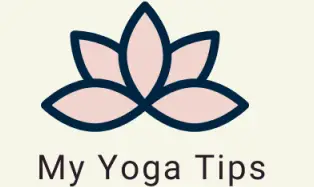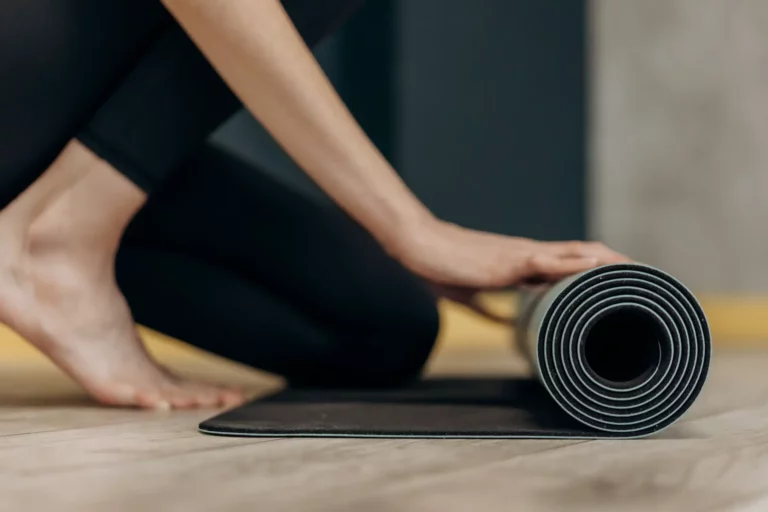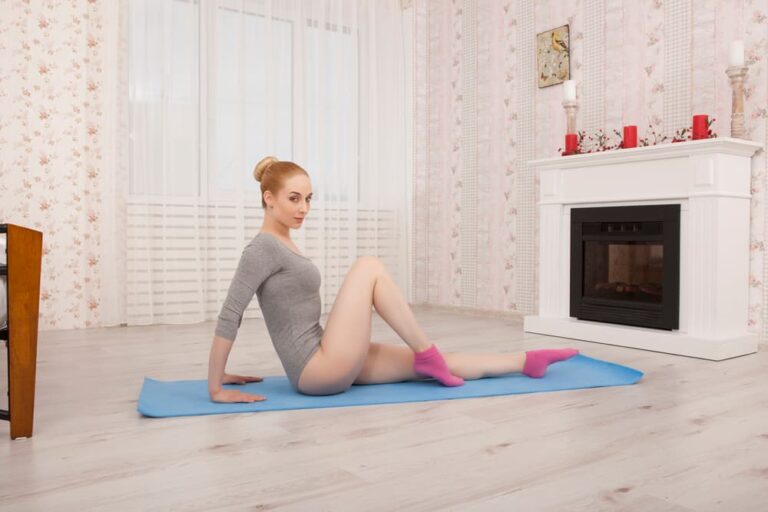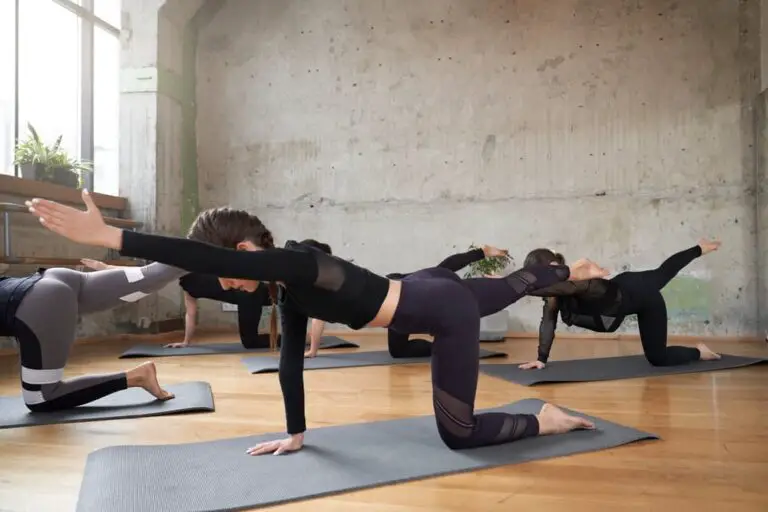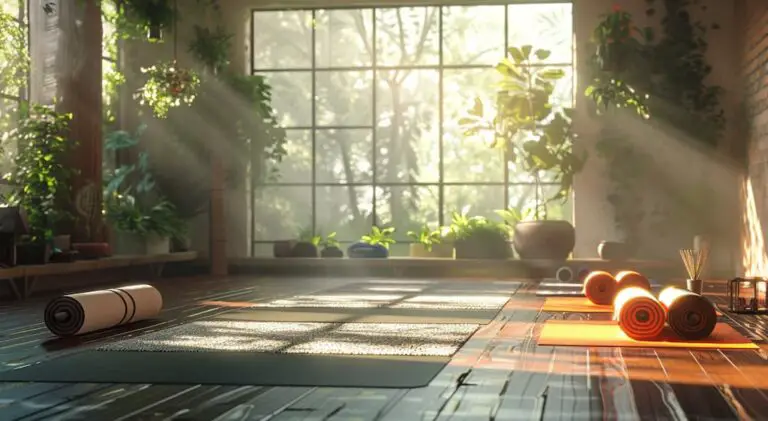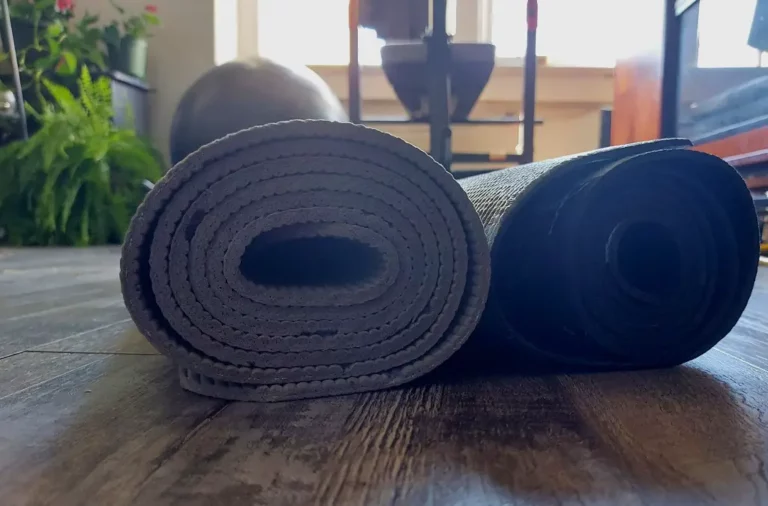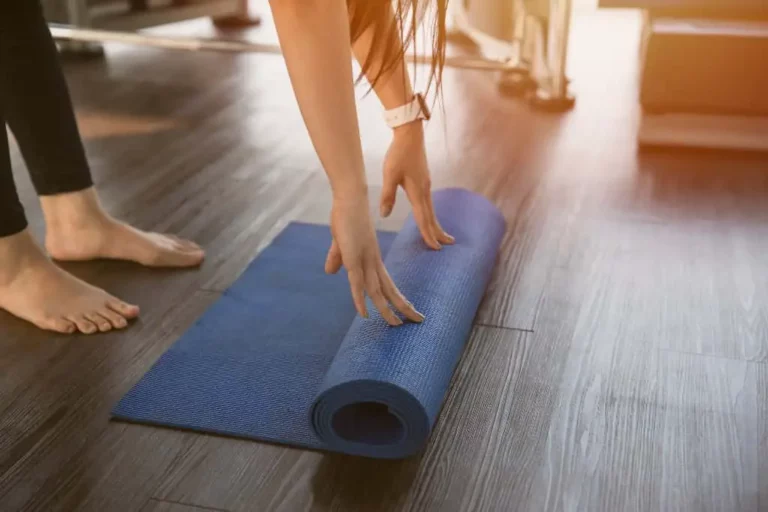Do Most Yoga Classes Provide Mats?
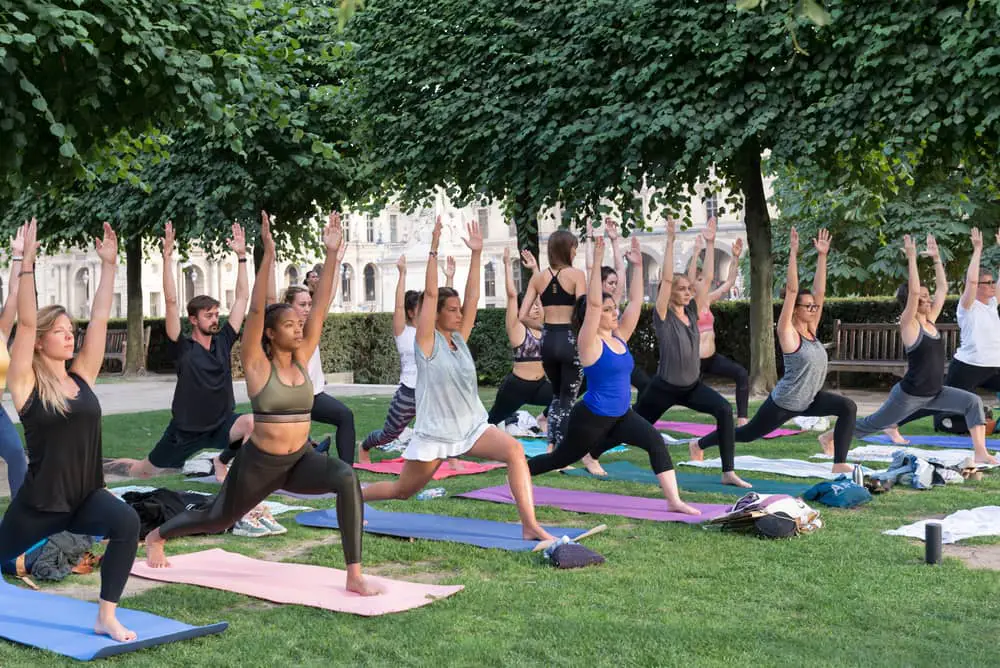
If you are new to yoga or looking for a new yoga studio, you may wonder if most yoga classes provide mats. Mats are considered an integral and valuable tool for yoga practice. They assist with balance, non-slip, and comfort during class. Join us as we learn about the classes that provide mats, those that do not, and their reasons.
Most Western yoga classes provide mats for practitioners to borrow or hire. Certain Eastern teachers believe that yoga students should practice on mats made from raw silk or cotton. Most mats available to borrow or rent at yoga studios are rubber, PVC, or TPE and should be cleaned between classes.
It can be awkward arriving at your first yoga class when you are unsure what to expect. We have your back and are here to give you all the inside information you need about yoga mats and which classes are likely to have them. Read on as we journey into the world of the yoga class.
Do Most Yoga Classes Provide Mats?
Most yoga classes provide mats for their students to use. Depending on the studio, they may be free of charge, or they could be for hire. If they are for hire, the fee will likely be small. Small studios or private yoga teachers may not have mats for students to use. They may have some for sale instead.
The only way to be sure what your studio does is to pay them a visit, visit their website, or give them a call before your first lesson.
While we are on the topic of chatting with your yoga studio, it is vital that you know what type of yoga you will be doing. Knowing what kind of yoga you will be doing will also give you insight into whether or not there could be mats available or if you need one at all.
Here are a few types of yoga that do not need mats:
- Aerial yoga
- Hot Yoga
- Outdoor yoga (on grass, beach, or other soft sand)
Although you can technically take a yoga mat to an outdoor or hot yoga session, it could become challenging to use. You will likely sweat a lot during hot yoga, making your mat wet and slippery. And on grass or soft sand, your mat will probably bunch up, get buried, or get in the way.
So, while speaking with your potential new yoga studio, find out what type of yoga class you will be doing before asking if they have mats available for use or hire.
Another question to ask the studio is about the cleaning practices. It is essential that you know how often the yoga mats are cleaned and what products are used to clean them. Are students required to pack the mats away after class, or are they left to be cleaned? Are they sprayed, wiped, dried, sanitized, or washed another way?
Ask the studio if students are required to place a towel or other cover over the yoga mat for hygiene purposes.
Ensure that you are satisfied with the answers you receive before committing to attending classes at the studio or using their mats. Also, remember that it is easy for someone to say that cleaning practices are a certain way. Once you are in the studio, keep an eye out to see the cleaning practices in action. If you are unhappy with them, take action as you see fit.
Is It Best To Use The Mats Provided By Yoga Classes Or My Own?
For many beginner yoga students, using the mats provided by the studio is a wonderful opportunity to practice yoga without having to invest too much.
Most studios have mats readily available for you to use, free of charge. Some may charge a small rental fee per class, and the cost likely goes toward the cleaning and upkeep of the mats.
If you are new to yoga and would like to try it out for a while before committing to purchasing your own equipment, using the studio mats is an acceptable way to begin.
There are some considerations to make if you use the mats provided by yoga classes. Let us go through them.
1. Be Polite When Using Studio Mats
Yoga studios typically have regular students, and if you are new, you are likely not one yet. When selecting your mat from the pile available, hang back and let others take their pick first.
Be polite and wait in line or for your turn. Similarly, watch what others do at the end of class or ask the instructor what you should do with your mat after class.
It may be best practice to return the mat to the pile, or it may be best practice to leave it out for cleaning. Avoid making an awkward mistake by simply following what others do or asking ahead.
2. Think Of Hygiene
Studio mats are usually used by many students. For this reason, you should bring a towel to place over the mat during class. Yoga is hard work, and we can get sweaty.
Picture yourself in child pose, breathing deeply, inhaling all the stale sweat of the yogi before you… ew… or the yogi after you getting a whiff of your yoga odors… more ew.
The hygiene factor guides many yoga students to purchase their own mat once they know that yoga is for them.
3. Dress Modestly
This point is similar to the hygiene point above. It is best to cover up a little if you use a studio mat. Mats that are used by many yoga students tend to harbor a variety of bacteria. As you sit, stand, and lie on the mat, those bacteria can be transferred onto your skin.
Wear comfortable clothes that cover your skin, especially in areas that are likely to make contact with the mat. Unfortunately, we can’t do anything about the feet.
When To Purchase A Yoga Mat
When we consider whether it is best to use a studio mat or your own, the question comes down to your level of commitment. (Or fear of germs)
If you feel that yoga is for you and wish to continue the practice, whether in classes or at home, it may be best to purchase a mat of your own. Not only will you be able to select a style and material that suit you, but you will also be able to take it wherever you like and clean it regularly.
A yoga mat is a symbol in a yoga class. It is your universe as you practice, your space. Although yoga mats as we know them only became popular in the 1980s, they have become synonymous with the practice.
When you purchase a yoga mat, remember that it is a tool, not the whole of yoga. When the mat was introduced, it was to help with slipping. Well-known guru, Sadhguru, mentions that when we practice yoga, we should remember our connection with the earth. He recommends practicing on packed mud and using a mat made from raw silk or cotton.
In the end, a yoga mat is intended to be a tool to make our yoga practice easier. It is designed to cushion our poses, help our grip, and show the others in the class that this is our area. More philosophically, when we unroll our mat, borrowed, rented, or owned, we ready our minds to practice yoga.
Conclusion
Most yoga classes, especially those in large gyms, provide mats for students to use. Smaller private classes may not offer mats to borrow. Some types of yoga do not need mats. Call ahead to the studio to ask if they have mats for use or hire and what their hygiene practices are. Be polite and hygienic when using studio mats.
